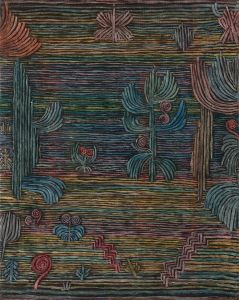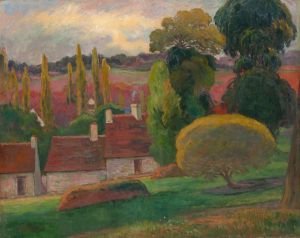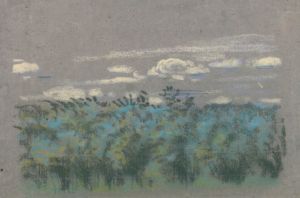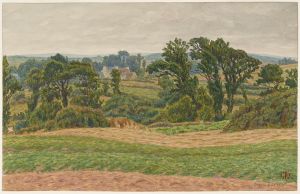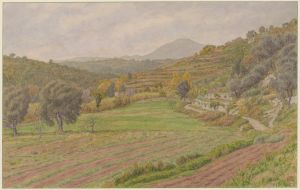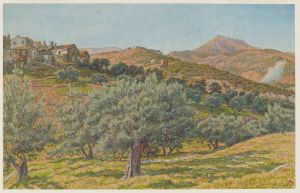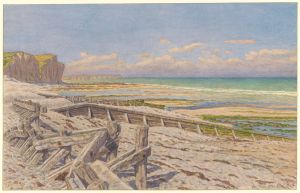
Le tas de pois. Camaret
A hand-painted replica of Henri Rivière’s masterpiece Le tas de pois. Camaret, meticulously crafted by professional artists to capture the true essence of the original. Each piece is created with museum-quality canvas and rare mineral pigments, carefully painted by experienced artists with delicate brushstrokes and rich, layered colors to perfectly recreate the texture of the original artwork. Unlike machine-printed reproductions, this hand-painted version brings the painting to life, infused with the artist’s emotions and skill in every stroke. Whether for personal collection or home decoration, it instantly elevates the artistic atmosphere of any space.
Henri Rivière (1864–1951) was a French artist known for his innovative contributions to printmaking and his incorporation of Japanese artistic influences, particularly the ukiyo-e style, into his work. One of his notable pieces is Le Tas de Pois, Camaret, which translates to "The Heap of Peas, Camaret." This artwork is part of Rivière's celebrated series Les Trente-Six Vues de la Tour Eiffel (The Thirty-Six Views of the Eiffel Tower), created between 1888 and 1902. The series was directly inspired by Katsushika Hokusai's famous Thirty-Six Views of Mount Fuji, and it reflects Rivière's admiration for Japanese aesthetics and his ability to adapt them to French landscapes and landmarks.
Le Tas de Pois, Camaret depicts a coastal scene in Camaret-sur-Mer, a commune in the Brittany region of France. The "Tas de Pois" refers to a group of rocky islets located off the Pointe de Pen-Hir, a prominent headland in the area. These rock formations are a well-known natural feature of the Breton coastline and have been a source of inspiration for many artists due to their dramatic appearance and the way they interact with the surrounding sea and sky.
Rivière's work is characterized by its use of bold lines, simplified forms, and a harmonious color palette, all of which are evident in Le Tas de Pois, Camaret. The piece captures the rugged beauty of the Breton coast while showcasing Rivière's mastery of lithography, the medium he used for the Les Trente-Six Vues de la Tour Eiffel series. His approach combines the precision of printmaking with the atmospheric qualities of painting, resulting in a work that is both detailed and evocative.
The artwork reflects Rivière's broader interest in the interplay between nature and human-made structures, as seen throughout the series. While the Eiffel Tower is the central theme of the collection, many of the prints, including Le Tas de Pois, Camaret, focus on the surrounding landscapes and their relationship to the iconic Parisian landmark. This dual focus highlights Rivière's ability to balance local specificity with universal themes, making his work resonate with audiences both in France and beyond.
Henri Rivière's contributions to art extend beyond his prints; he was also a pioneer in shadow theater and a key figure in the artistic circles of Montmartre during the late 19th and early 20th centuries. His work remains highly regarded for its technical skill, aesthetic innovation, and ability to bridge cultural influences. Le Tas de Pois, Camaret stands as a testament to his talent and his deep appreciation for the natural and cultural landscapes of France.





